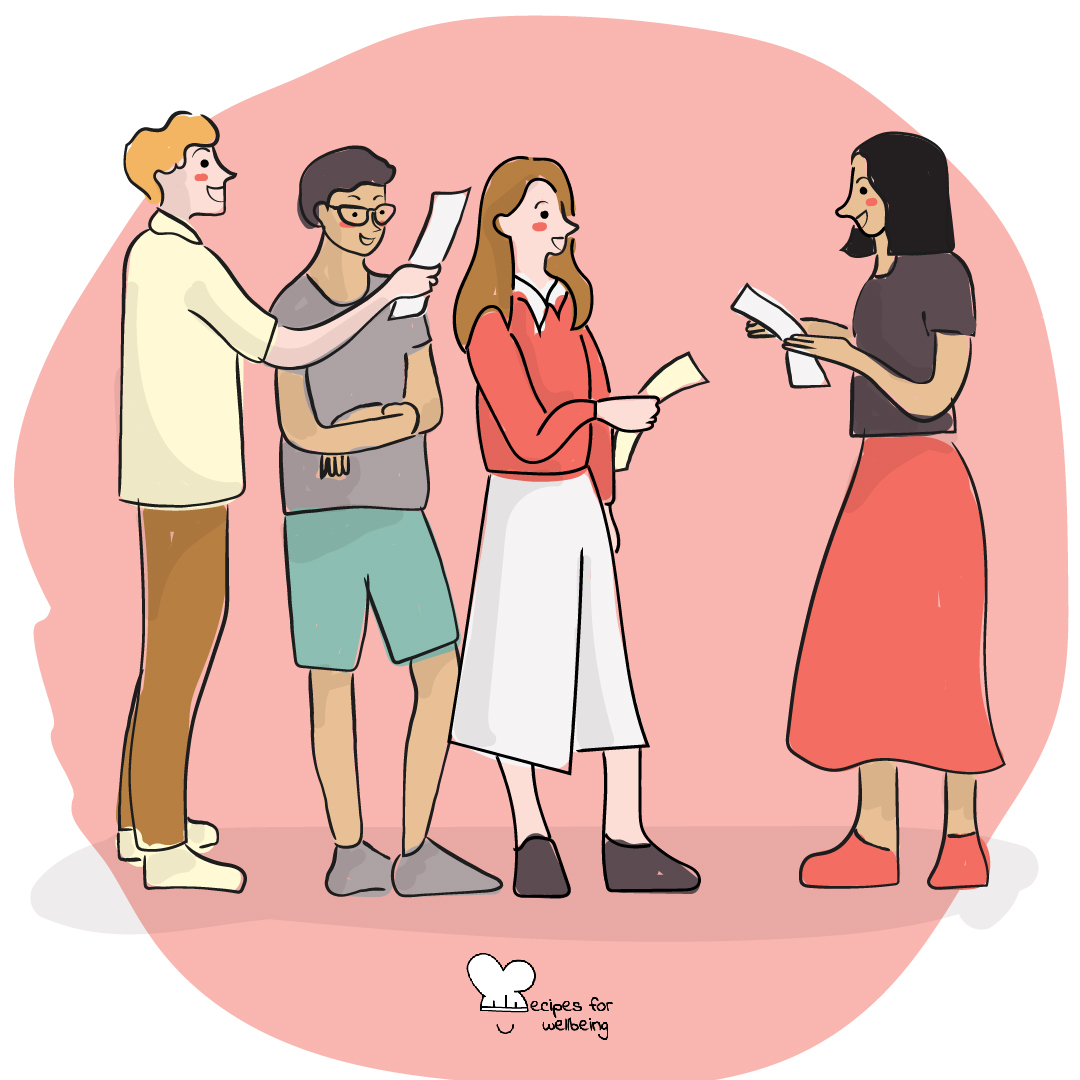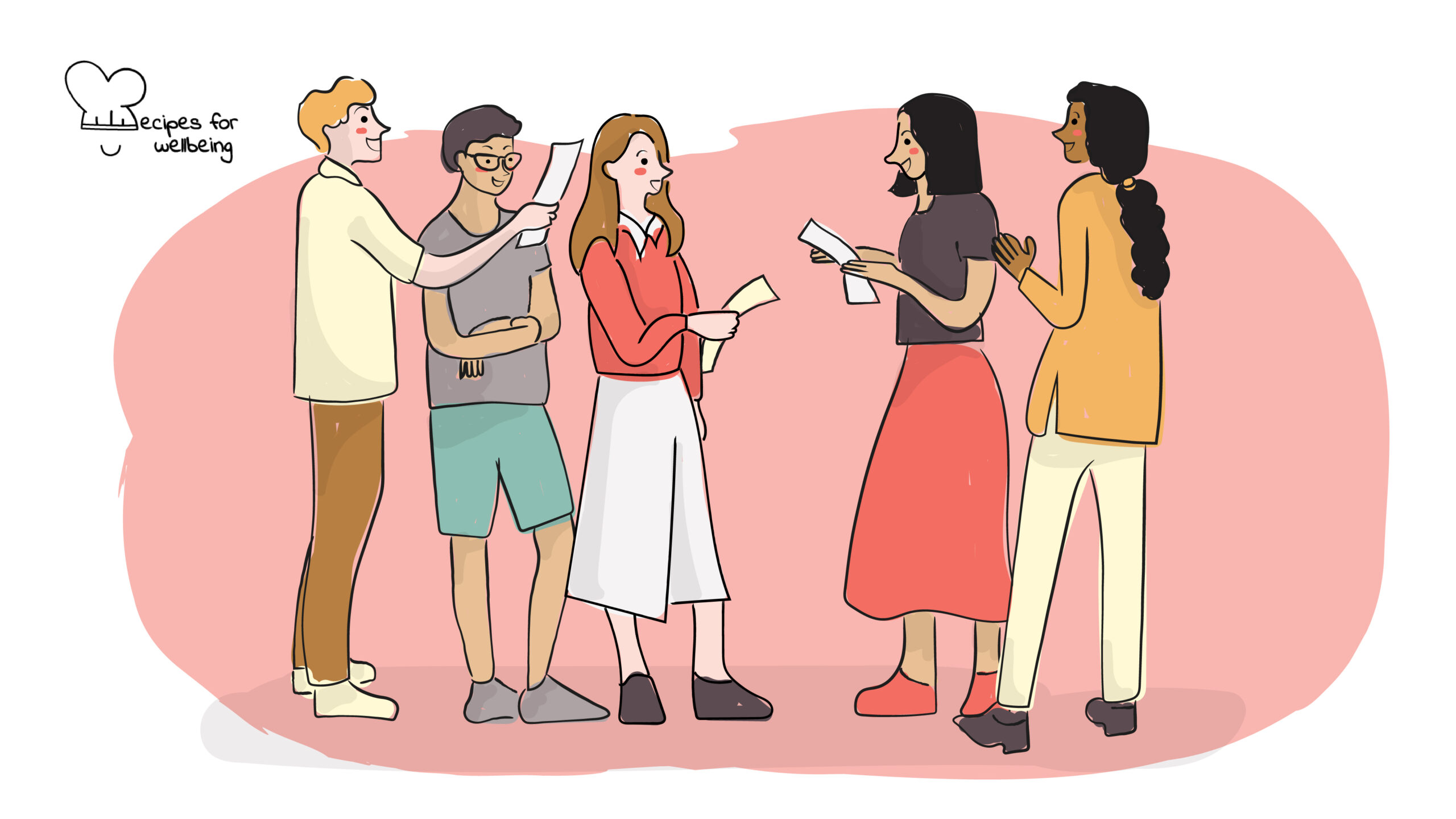
Collaboration questions
Alone we can do so little; together we can do so much. ―Helen Keller
👥 Serves: 11-25 people, 2-10 people
🎚 Difficulty: Hard
⏳ Total time: 121-240 minutes
🥣 Ingredients: Your team, flipchart, markers
🤓 Wholebeing Domains: Awareness, Community, Liberatory Learning, Radical Care
💪 Wholebeing Skills: Challenging, Clarity, Collaboration, Curiosity, Hosting conversations, Inquiry, Listening, Multiperspectivity, Openness, Reflection

Collaboration questions
📝 Description
What does collaboration look like in your team?
You are not alone. We don’t mean simply that “you are not alone” in going through the hardships (and rewards!) of being a changemaker; but that you are not alone in carrying out the work of your organisation. We know it is easy to fall into the trap of the hero-preneur whereby everything depends on you and you feel the entire weight of the world on your shoulders. However, this is neither the healthiest nor the most effective way for you to bring about positive change in the world.
So, whether your team is just 2-3 other people or you are part of a more established and larger team, make sure to forge a truly collaborative relationship with them. The following activity guides you through 6 rounds of questions that help you reflect on the mindset and practice of collaboration within a team. We suggest taking at least half a day for this process, but you may also decide to take a full day and incorporate other team-building activities. This will boost your team’s sense of belonging and ownership whilst at the same time allowing you to rely on others to continue your much-needed work. It serves both your individual wellbeing and your team’s.
•••
This recipe has been featured in our blog post “Collaboration, collaboration, oh collaboration!” published on tbd* on 22 January 2020.
👣 Steps
Step 1 – Form groups (5’)
If you have a small team (4-6 people), you don’t need to form sub-groups but if you are above 6 people, we recommend splitting into subgroups of 4-6 people.
Step 2 – Round 1: Belief (15’)
Ask each group to discuss the questions related to the following statement.
“Belief: A sense of purpose and finding the optimism that you will need to succeed.”
- How does this fit with our broader priorities?
- Why is this worth committing to?
- What happens if we don’t do this?
- What is the future that we are going for?
- What wider context do we need to consider?
Step 3 – Round 2: Structure (15’)
Ask each group to move onto the following questions related to the statement below.
“Structure: a clear and grounded plan for what we are doing, held with the right flexibility.”
- What is the overall plan and timeline?
- What resources are available?
- What’s the scope of what we’re doing?
- Who has responsibility for what?
- What structures help us work together?
Step 4 – Sharing (25’)
Ask each group to share a few key insights from the first two rounds of discussions and have someone gather them in a collective harvesting flipchart. Note that if you have many groups, it may require more time. An alternative method is to use a world-café-style sharing structure where one person from the group stays at their group table and welcomes members from other groups to share what was discussed. Members move around the room freely and informally.
Step 5 – Break (5’)
Give people a few minutes of break.
Step 6 – Round 3: Involvement (15’)
Welcome people back in the same groups (or change them up!) and ask them to reflect on the questions related to the following statement.
“Involvement: the right mix of people involved and getting the best out of each other.”
- Who has a stake in what we are doing?
- What is the right mix of people to get things done?
- How do we get the benefit of an outside view?
- How do we make space for diverse points of view?
- How do we explore creative ideas?
Step 7 – Round 4: Progress (15’)
Ask each group to move onto the following questions related to the statement below.
“Progress: momentum towards our goals and focusing on successful delivery.”
- How do we move from discussion to action?
- How do we make the right decision at the right time?
- How do we test things out in the real world?
- How do we know how well we are doing?
- How do we respond positively to problems?
Step 8 – Sharing (25’)
See step 4.
Step 9 – Break (5’)
Give people a few minutes of break.
Step 10 – Round 5: Care (15’)
Welcome people back in the same groups (or change them up one last time!) and ask them to reflect on the questions related to the following statement.
“Care: the strong relationships that generate resilience and lasting commitment.”
- How do we stay positive through ups and downs?
- How do we nurture strong relationships?
- How do we create a sense of being ‘in it together’?
- How can we embrace feedback to help us grow?
- How do we build powerful alliances?
Step 11 – Round 6: Presence (15’)
Ask each group to move onto the following questions related to the statement below.
“Presence [the heart of collaboration]: showing up with commitment and fully engaging with the dynamics of the group.”
- What needs our attention right now?
- How should we represent the group in the wider world?
- What will you give and what do you want to get?
- Why are you personally committed to this?
- How are you showing up in this group?
Step 12 – Sharing (25’)
See step 4.
Step 13 – Break (15’)
Give people a slightly longer break.
Step 14 – Harvesting (45’)
Take some time for a general harvesting on the overall process, highlighting the key insights, identifying the main challenges and opportunities, and aligning on the next steps.

